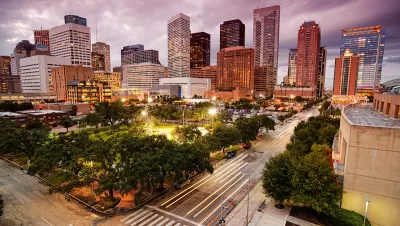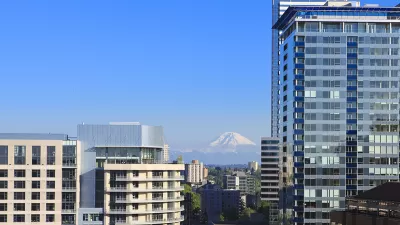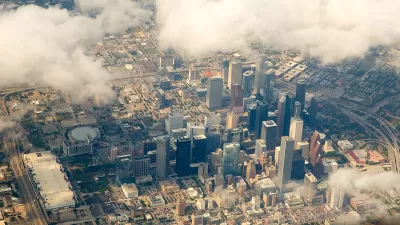With its rapid economic growth, dynamic cities, and increasingly diverse population, Texas could offer a model for the future of the United States.

In an opinion piece for The New York Times, Steven Pedigo argues that Texas is the country's "bellwether state," offering "a glimpse into the country’s economic future and engines of growth as well as its political fault lines in the long run."
Pedigo points to the 2020 Census as well as economic and demographic data from the last two decades, which show that "Texas is urbanizing even faster than California." And as a majority-minority state, "[i]ts present brand of politics may offer clues to the future of struggles across the country between a grasping after mythology and the shifting demographics of America."
Texas, writes Pedigo, "added 4.2 million residents between 2000 and 2010, and another four million in the last decade for a growth rate of almost 40 percent — double that of the country as a whole." Of the new Texans moving to the state since 2010, "over 95 percent of them have been people of color." Close to 70 percent of Texans live in four major metropolitan areas, which are all growing at a rapid rate.
Pedigo credits the state's business-friendly climate and "limited government" with luring major corporations to its cities. "Texas is no longer just about big oil and cattle; we have one of the most diversified economies in the country."
But Pedigo sees a problem with Governor Greg Abbott's "top-down policy agenda that is backward-looking, excludes huge swaths of Texas’s citizenry and runs against the grain of many of its new stakeholders’ values." According to polls, Texans are "deeply concerned about climate change" and "appalled by the G.O.P.’s divisive agenda." What is important to future growth, says Pedigo, is preserving "[t]he Texas model of public-private cooperation with its mutual focus on growth."
FULL STORY: Texas Is the Future of America

Planetizen Federal Action Tracker
A weekly monitor of how Trump’s orders and actions are impacting planners and planning in America.

Map: Where Senate Republicans Want to Sell Your Public Lands
For public land advocates, the Senate Republicans’ proposal to sell millions of acres of public land in the West is “the biggest fight of their careers.”

Restaurant Patios Were a Pandemic Win — Why Were They so Hard to Keep?
Social distancing requirements and changes in travel patterns prompted cities to pilot new uses for street and sidewalk space. Then it got complicated.

Platform Pilsner: Vancouver Transit Agency Releases... a Beer?
TransLink will receive a portion of every sale of the four-pack.

Toronto Weighs Cheaper Transit, Parking Hikes for Major Events
Special event rates would take effect during large festivals, sports games and concerts to ‘discourage driving, manage congestion and free up space for transit.”

Berlin to Consider Car-Free Zone Larger Than Manhattan
The area bound by the 22-mile Ringbahn would still allow 12 uses of a private automobile per year per person, and several other exemptions.
Urban Design for Planners 1: Software Tools
This six-course series explores essential urban design concepts using open source software and equips planners with the tools they need to participate fully in the urban design process.
Planning for Universal Design
Learn the tools for implementing Universal Design in planning regulations.
Heyer Gruel & Associates PA
JM Goldson LLC
Custer County Colorado
City of Camden Redevelopment Agency
City of Astoria
Transportation Research & Education Center (TREC) at Portland State University
Camden Redevelopment Agency
City of Claremont
Municipality of Princeton (NJ)




























